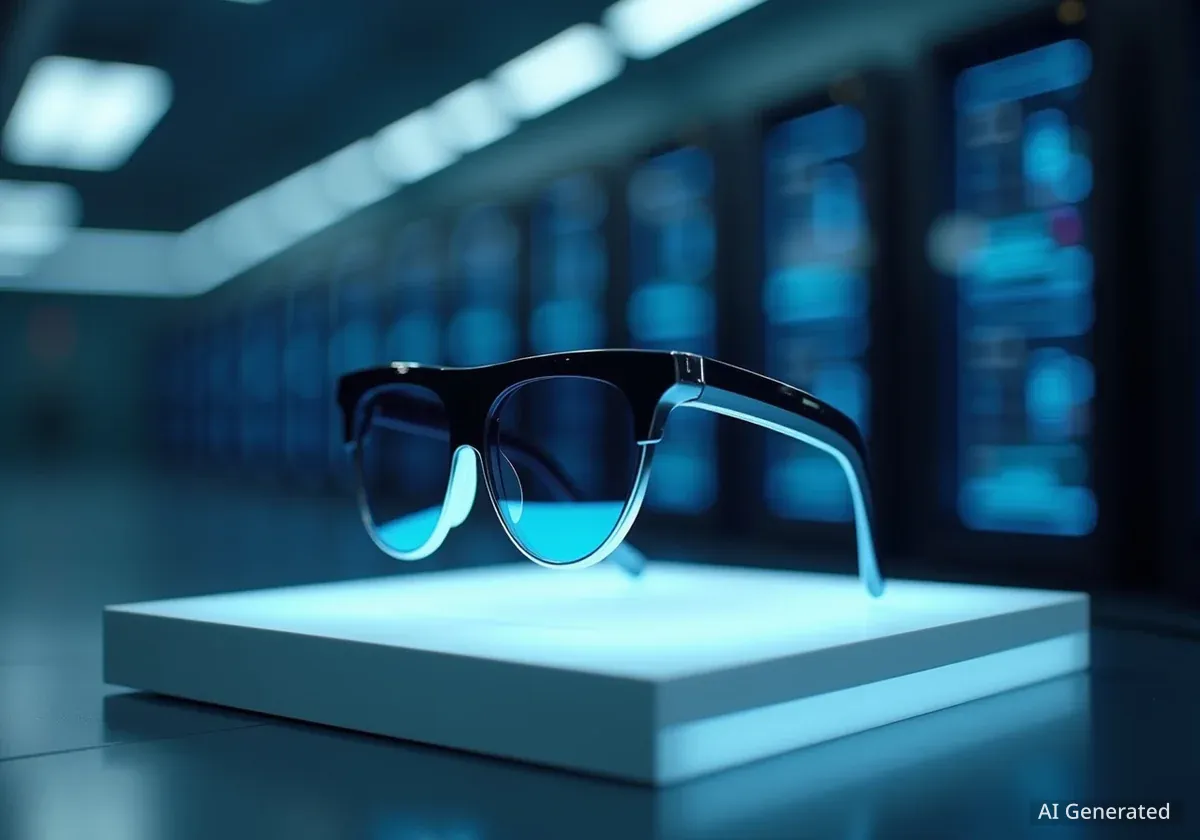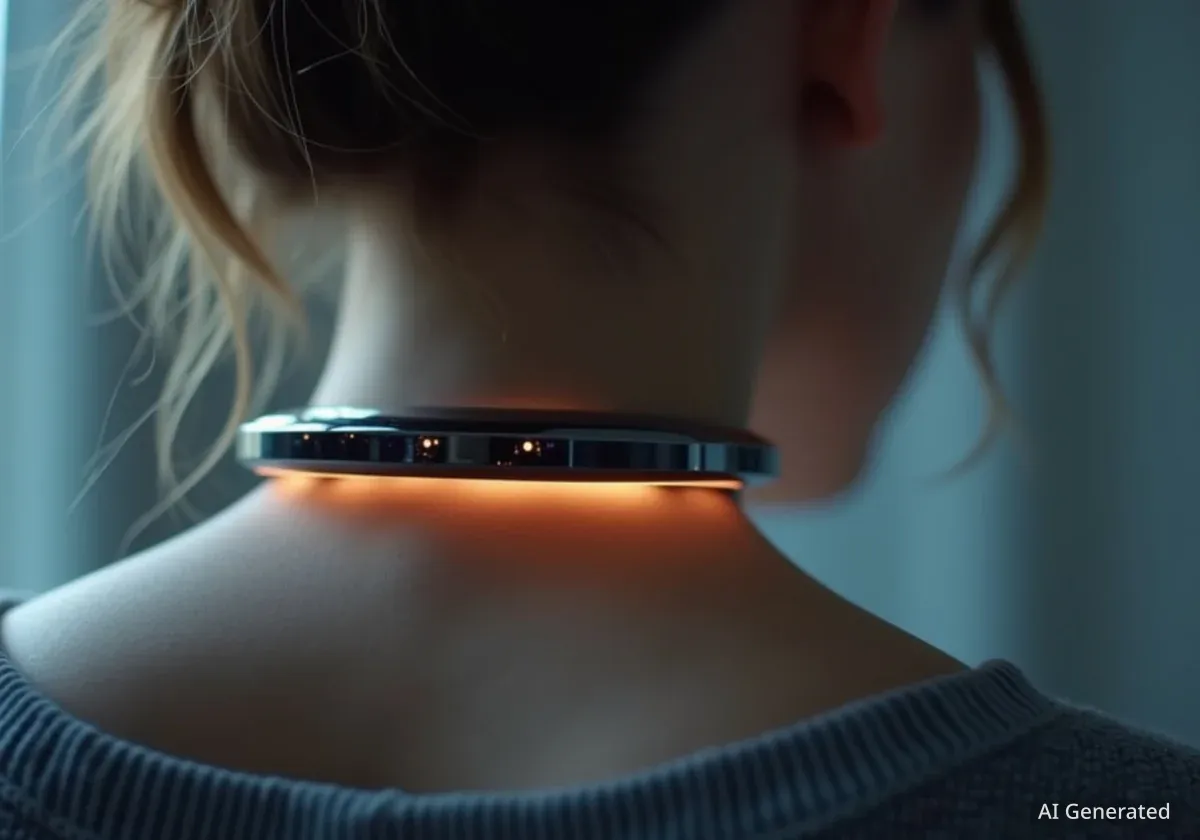Apple Inc. has reportedly altered its product roadmap for augmented reality hardware, pausing development on a next-generation Vision Pro headset. The company is reallocating resources to prioritize the creation of a more accessible pair of smart glasses, a move that positions it to compete more directly with products from Meta Platforms Inc.
According to individuals familiar with the internal decision, staff members previously working on a less expensive version of the Vision Pro were informed of the strategic shift last week. This change signals a significant adjustment in Apple's approach to the wearable technology market.
Key Takeaways
- Apple has suspended work on a planned, more affordable follow-up to its Vision Pro headset.
- The company is now prioritizing the development of lightweight smart glasses.
- This strategic pivot is seen as a direct response to the market presence of Meta's smart glasses.
- The paused Vision Pro project, code-named N100, was originally targeted for a 2027 release.
A Major Shift in Apple's Wearable Strategy
Apple has made a decisive change in its long-term vision for augmented reality (AR). The company has reportedly halted efforts on a project, internally known as N100, which aimed to produce a more affordable and lighter version of its high-end Vision Pro headset. The original goal for this device was a market release in 2027.
Instead of pursuing a direct successor to the Vision Pro in the short term, Apple is now concentrating its efforts on a different form factor: smart glasses. This represents a fundamental pivot from a high-immersion, mixed-reality headset to a more conventional, everyday wearable device. The decision to reassign personnel from the N100 project underscores the new urgency behind the smart glasses initiative.
Headsets vs. Glasses: A Different Approach
The Vision Pro is a "spatial computing" headset, designed for immersive experiences that blend digital content with the physical world. Smart glasses, in contrast, are typically designed to look like conventional eyewear, offering more limited, screen-based information overlays, camera functions, and audio features. The latter is considered a more accessible and socially acceptable form factor for daily use.
This strategic realignment suggests Apple is responding to market feedback and the competitive landscape. While the Vision Pro demonstrated advanced technology, its high price point and form factor have limited its mainstream adoption. The focus on glasses indicates a new strategy aimed at capturing a broader consumer base.
The Competitive Landscape with Meta
A primary driver for Apple's strategic shift appears to be the progress made by its chief rival in the space, Meta Platforms Inc. Meta has already established a foothold in the smart glasses market through its partnership with EssilorLuxottica, the parent company of Ray-Ban.
The Ray-Ban Meta smart glasses offer features like photo and video capture, music playback, and hands-free calling in a familiar sunglasses design. While not true AR devices, they represent a successful entry into the consumer wearable market that Apple has yet to counter directly. By prioritizing its own glasses, Apple aims to challenge Meta's early lead.
Market Context
The market for AR/VR devices is still emerging. While Meta has shipped millions of its Quest headsets, the smart glasses category is seen by many as having greater long-term potential for mass adoption due to its discreet design and all-day wearability. Apple's entry would significantly intensify competition in this segment.
The move also reflects a divergence in strategy. Meta has been focused on building an accessible ecosystem around its Quest headsets and Ray-Ban glasses, often at lower price points. Apple's initial Vision Pro strategy was a top-down approach, introducing premium technology first. The new focus on glasses suggests a move toward a more mainstream, competitive product line.
Details of the Shelved 'N100' Project
The now-paused project, code-named N100, was Apple's plan to make its spatial computing technology more accessible. The primary objectives were to reduce both the cost and the weight of the hardware, addressing two of the main criticisms of the original Vision Pro, which launched at $3,499.
Engineers on the N100 team were tasked with finding ways to simplify components and use less expensive materials without fundamentally compromising the core user experience. The target release date of 2027 indicated a multi-year development cycle was already underway.
According to sources familiar with the matter, the internal announcement to move staff from the N100 project to the smart glasses initiative was a clear signal of a change in corporate priorities.
The decision to shelve this project does not necessarily mean Apple is abandoning the Vision Pro product line entirely. The company may still release iterative updates to the existing high-end model. However, the dream of a cheaper headset in the near future appears to be on hold as the company pursues what it may see as a larger market opportunity with smart glasses.
Future of Apple's AR and VR Ambitions
Apple's long-term goal has always been to create a pair of lightweight, all-day wearable AR glasses. The Vision Pro was widely seen as a stepping stone—a developer-focused device to build an ecosystem and refine the technology needed for that ultimate product.
The pivot suggests that Apple may feel the technological hurdles for true, see-through AR glasses are still significant. Developing powerful yet efficient processors, miniature high-resolution displays, and long-lasting batteries that can fit into a standard glasses frame remains a major engineering challenge for the entire industry.
By focusing on a product that may be more akin to Meta's current offerings, Apple could be taking a more pragmatic, phased approach. This could involve releasing a product with more limited functionality first—such as camera and audio features—while continuing to develop the underlying technology for a true AR experience in the background.
Potential Product Roadmap
This strategic shift could lead to a two-tiered product lineup in the future:
- Apple Glasses: A consumer-focused, stylish wearable for everyday tasks, notifications, and media capture.
- Vision Pro: A high-end, professional-grade device for specialized applications in design, training, and immersive entertainment.
This approach would allow Apple to compete across different segments of the market, similar to its strategy with the standard iPhone and the iPhone Pro models. However, the timeline for the release of Apple's first smart glasses remains undisclosed.


